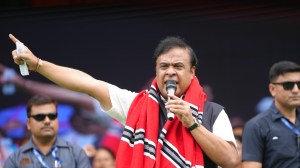All dressed up and nowhere to rally
The recent order of the Kolkata high court seeking to exile rallies during busy weekday hours falls into a pattern of similar judgements sin...

The recent order of the Kolkata high court seeking to exile rallies during busy weekday hours falls into a pattern of similar judgements since 1997, when the Kerala court banned bandhs in the state. Ironically, the ruling comes at a time when rallies are considered potent weapons of public protest. For instance, rallies were simultaneously organised across 60 cities (including Kolkata) against military action in Iraq.
While regulation is vital to restrain violence and coercive mobilisation associated with most rallies, such rulings have also whittled down spaces available for public protest. Since 1993, Delhi’s Boat Club grounds have been barred to such activities. People wishing to petition Parliament have to assemble 6 km away in a demarcated area behind the Red Fort. Areas around most state legislatures come under the purview of Section 144 of CrPC, placing a ban on assembly. In Kolkata, groups of greens have rallied to the cause of the Maidan, and have petitioned the courts to shift rallies away to a more discreet place near the eastern metropolitan bypass.
Other cities, elsewhere, zealously guard their public spaces from government attempts to muzzle free expression and also from civic propensity to deface them. In London and New York, for instance, public areas are associated with the long history of public action.
The 1872 Parks and Gardens Act in Britain created Speakers’ Corner in London’s Hyde Park, defining spaces of public protest and action. Over the last hundred years, suffragettes, miners, pro-fox hunters and campaigners against police brutality, the poll tax, fuel tax and the prohibition of cannabis have all amassed in Hyde Park. More recently, even the government backtracked and allowed protests against the war to go ahead in the park.
Public spaces in a city not only accommodate its diversity. Collective action is increasingly becoming technology enabled. The Internet and mobile phones have been used to shape ‘‘flash mobs’’ — where people form quick crowds at public places. This technique was used for more serious political ends to compel President Estrada of the Philippines to surrender and to tip the Korean election towards electing the ultimate winner, President Roh.
Photos





- 01
- 02
- 03
- 04
- 05


























